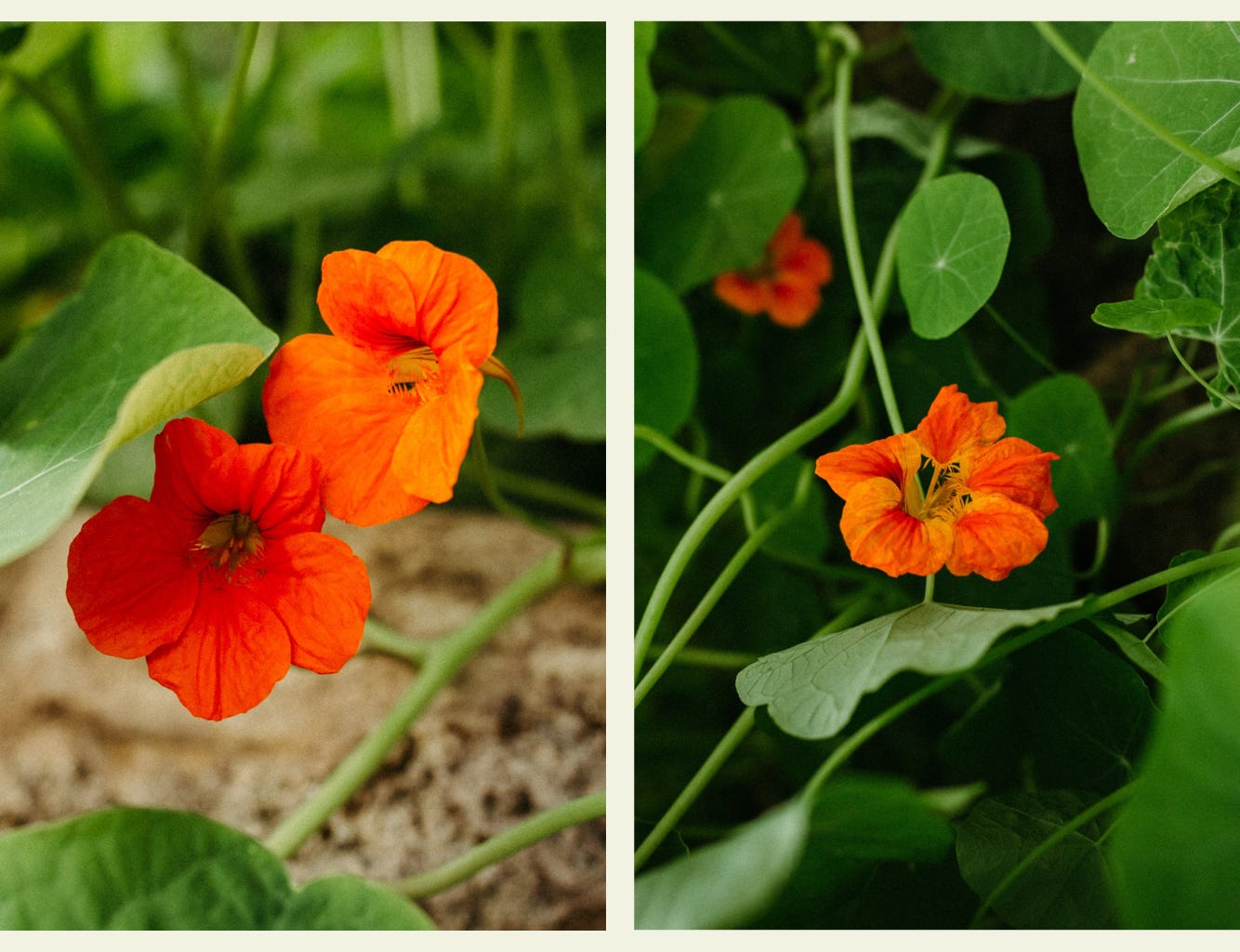A few years ago I lived in an old house on a corner block. When the weather turned cooler, the section of the garden under the mulberry tree gave way to masses upon masses of nasturtium. The trailing vines spilt over each other until they were higher than my compost bin. I would wade through the round leaves with my yoghurt tub of food scraps, and push the vines aside to reach the compost lid. A soft peppery smell wafted about me, and I’d stop to watch the bees flying from flower to flower before going back inside.
I remember my mother teaching me as a child that I could eat the nasturtium flowers. It felt somehow naughty and also the most thrilling delight to consume a flower so bright and beautiful. I wasn’t such a fan of the peppery taste as a child, but nowadays I’m very keen on it. If you like the bite of rocket, maybe you’ll like nasturtium too.
Nasturtium flowers are one of my favourite edible flowers to forage. They make any dish look happier. You can also eat the leaves, which have a more potent flavour if they have been growing in the heat or direct sunlight. Pick the younger, tender leaves to add to your salads or stir fries. Or use the large one like grape leaves to make dolmades.
When the flowers begin dying off, it is sad to see the colour go. The seeds are the only consolation, being just as delicious as the rest of the plant. I have had success pickling nasturtium seeds to make a foraged version of capers (cute how-to by Good Life Permaculture). To make sure I have nasturtium again, I always leave plenty of seeds on the plant, or toss some of the seeds where I want nasturtiums to spring up next year.
The peppery taste is thanks to the presence of mustard compounds, which also make the nasturtium an excellent repellent of little creatures like cabbage white butterflies, aphids and mites. Planted under apple and pear trees, apparently nasturtium can help deter codling moth. And while it’s keeping out unwanted guests, nasturtiums welcome beneficial insects like hoverflies and bees into the garden.
Flicking through my books on herbal medicine, it seems nasturtium has a few notable uses due to its disinfectant, antibiotic and anti-inflammatory properties. Here are a few remedies to try at home:
soak nasturtium leaves in a bath to treat athlete’s foot;
make nasturtium tea to prevent bacterial infections, clear phlegm or treat high blood pressure;
eat the flowers to promote eye health;
include the leaves and seeds in your salads for an immune-boosting dose of Vitamin C.
A winter activity I recommend: walk to your nearest nasturtium patch after it has rained (or while it is raining, if you are so inclined) and observe how water behaves on the leaves. The raindrops ball up instantly on contact with the leaves, running across their surface like quicksilver. Nasturtium leaves, along with lotus leaves and butterfly wings, have inspired engineers to make some of the most waterproof materials out there.
Until next time. Hope you have some time to go for a walk this week, or notice something beautiful. Speak soon. x







I grew up in a small harbour side town in New Zealand and remember the nasturtium growing prolifically up the banks along the winding, coastal roads. Certainly a hardy plant that I still enjoy in my garden today. The "poor man capers" sounds like something to try, I'll be on the lookout for those seed pods. Thanks for the great info.